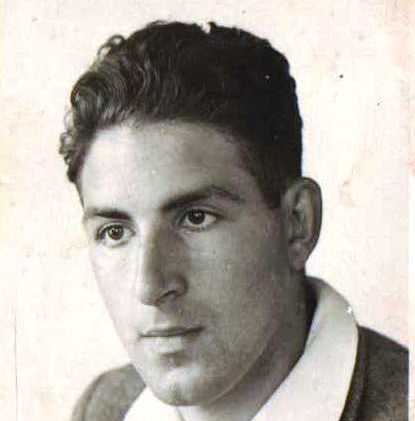The following is a record of an interview with Erica Moen on the 24 April 1995 about her brother and sister.
“In 1940 Harrold was in his third year of formal schooling at Middelbare Technical School (MTS) and at the age of 17 traveled between Loosdrecht, his home, through Amsterdam to Haarlem every day. This was of concern because the Nazis were already active and was using Amsterdam as the collection area for herding all the Dutch Jews in Holland.
It was also the time when the trade unions conducted a strike against the Nazi’s. Never the less this situation heightened my families concern about Harrold’s safety. It is not known whether he was wearing a Star of David, unlikely, but Erica recalls living in constant fear that he would be picked up by the Nazi’s or NSB as his features were distinctly Jewish. It appears that the course was changed especially for him to assure his safety (this is by no means clear). Erica believes that had he been on his year of practical experience he would have been more street wise and able to survive the Nazi onslaught.
Harrold and Rebecca Deen were aware of the atrocities being waged by the Germans and after receiving their papers immediately made plans to scour the Dutch countryside for possible hiding places. They ended up at Haarlemmermeer and were sighted cycling their way there by the same farmer who had hidden their sister, Erica, during the war. This was farmer Mr. Groetemarsink is referred to later by Erica.
Harrold and Rebecca’s underground life ended on a farm at Haarlemmermeer. The farmer had risked his own life to hide them. It transpires that a farm hand had a disagreement with the farmer and in retaliation informed NSB of the Jewish visitors. He hoped to get the farmer in trouble but Harrold and Rebecca were caught instead. It was illegal to hid Jews although there is considerable evidence to show that many Dutch citizens regularly did so. We can only speculate that on their capture Harrold and Rebecca were transported to Westerbork. It was normal practice to hold underground Jew conducting this illegal practice for a short time and then transport them in cattle trucks to the concentration camps in Poland”.
Red Cross records show they were captured and transported to Westerbork from No. 269 Nieuwendijk, Amsterdam on the 6 July 1943. They were deported by cattle car on the 13 July and died together at Sobibor, Poland on 16 July 1943. They were transported with 1988 other prisoners - the second last transport to Sobibor from Kamp Westerbork.
During October 1990 and June 1992 the author ,Martin Moen, visited this memorial in Oud Loosdrecht, Holland that specifically remembers the death of two innocent Dutch Jews Rebecca Louise and Harrold Deen. It has not been established why it is in this place that has no Jewish facilities. However it could be assumed that Louis and Marianna Deen were very well regarded and perhaps the memorial was erected as a sign of respect. Erica Moen never spoke of this memorial and it was Klaas Moen's sister-in-law that made Martin Moen aware of it. Martin was born a few hundred meters from this site that marked the commencement of his journey of discovery. The terrible plight of the Nederlands 140,000 Jews was to unfold and his family was part of it.
Simon Moen, Martin's son, was born on the same day and month as Harrold Deen 11 February 1975. History has remembered these innocent human beings. Rebecca Moen is named after Rebecca Louise Deen as requested by her great grandmother Marianna Deen. Ruth Mossenson, Martin's wife, was born the same date as Rebecca Louise Deen. The author has had the names of Rebecca and Harrold Deen added to the annual zarzeit list at the Perth Hebrew Congregation, Western Australia
